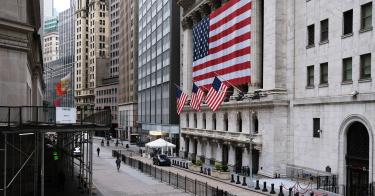Our nation faces a once-in-a-generation challenge. Yet our efforts to stem the coronavirus pandemic have left some wondering if the cure is worse than the disease. By practicing extended social distancing and shutting down major parts of the economy, are we being asked to make a choice between saving hundreds of thousands of lives or saving our jobs and our economy?
The reality is, this is not an either-or situation: If the economy fails, there will be severe, long-term health consequences; and if the health care system fails, there will be severe, long-term economic consequences. A nation decimated by the disease cannot have a functioning economy, and a catastrophic loss of jobs wreaks horrific damage on both mental and physical health.
Thus, the disease and the economic damage ravaging America are twin foes, and we must defeat them both.
That means good public health policy is good economic policy, and vice versa. We must prioritize getting people back to work, but only as soon as it’s safe to do so.
Protect public health
The first step in protecting both lives and livelihoods is to slow the spread of infection. Social distancing buys us time—time to increase the capacity of our hospitals to handle the influx of critical cases; time to expand testing to gain a better understanding of the extent of the infection; and time to develop treatments and potentially a vaccine.
The coronavirus is more serious than any epidemic we have faced in recent history, including the flu, H1N1, Ebola, and SARS. The available evidence indicates that the coronavirus is far more infectious than the seasonal flu (meaning it will infect more people) and has a higher death rate—perhaps as much as 10 times higher.
It would be completely irresponsible to let this disease simply run naturally through the American population. There is no widespread immunity and no cure or treatment. Without social distancing and other mitigation measures currently in place, a higher infection rate coupled with a much higher death rate could lead to an enormous number of deaths. Additionally, COVID-19 seems to have a significantly higher hospitalization rate than the flu, with many patients requiring ventilators to help them breathe. If current infection rates continue, the health care system could be overwhelmed.
While the immediate public health threat from the coronavirus is the first danger, and ensuing economic depression would be devastating.
Severe economic downturns can create prolonged damage to America’s human capital—the job skills, knowledge, and productivity of our workforce—especially if our educational and health care resources are threatened for any significant period of time. This means a diminished ability to produce goods and services and to develop new, cutting-edge innovations, which can hamper the economy and job creation even further, making any recovery even longer and more painful.
Reopen the economy
Keeping the American people at work and prosperous is what will produce better health outcomes for our citizens. A growing economy has the money for research and development into new medical innovations and cures; has more resources to better educate and train medical personnel; and creates greater capacities of beds, equipment, medicines, and personnel to handle the sick. It’s also an economy where abundance allows us to have the resources to help poorer citizens get the medical help that they need.
After we have slowed the spread of the coronavirus and expanded the medical capacity to treat more cases, we can start to reopen the economy. That may be done by region, business sector, or even groups of individuals based on their risk factors, as these groups have been affected to different degrees. We must also be guided by reliable data on COVID-19 infection and mortality rates.
As with most diseases, we won’t be able to entirely eliminate the threat, but we can mitigate it. For example, every year, tens of thousands of Americans die from seasonal flu. COVID-19 will likely continue to be with us, but we will work to minimize the loss of life until a vaccine is developed.
With the tools to manage the disease in hand—tools like expanded hospital and intensive care capacity, more protective equipment for medical personnel, drugs and treatments to aid the sick, and extensive testing to guide our response—we can confidently start to get America back to work.
America has confronted greater enemies than the coronavirus, and we have beaten them back. Working as one nation—the public and private sectors, nonprofits, and community and religious organizations—we will conquer this disease and emerge from this chapter in our history stronger than before. That’s what America has always done with her challenges, and that’s what America will always do.
This piece originally appeared in USA Today




